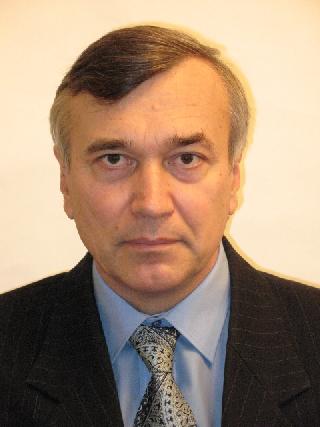Kostiantyn CHYSHKO (Konstantin A. Chishko), Leading Researcher, DSc.

Department of Theoretical Physics,
B. Verkin Institute for Low Temperature Physics
& Engineering
of the National Academy of Sciences of Ukraine
47 Nauky Ave., Kharkiv, 61103, Ukraine
Languages:
Ukrainian, English, German, Russian
Education:
Name of Institution |
Degrees |
Field |
|---|
| B.Verkin Institute for Low Temperature Physics and Engineering of the National Academy of Sciences of Ukraine | Doctor of Sciences (1994) | Solid State Physics |
|---|
| Kharkov State University | Docent (1993) | Solid State Physics |
|---|
| B.Verkin Institute for Low Temperature Physics and Engineering of the National Academy of Sciences of Ukraine | Senior Researcher (1992) | Solid State Physics |
|---|
| Institute for Low Temperature Physics and Engineering (Kharkiv) | PhD Phys & Math (1977) | Theoretical and Mathematical Physics |
|---|
| Kharkov State University | M.Sc. (1971) | Physics and Mathematics |
|---|
Field of Scientific Interest:
Theoretical Physics of condensed matter. Quantum crystals and cryocrystals, material sciences, electromagnetic and acoustic phenomena in condensed matter
Main Achievements:
- The role of spin degrees of freedom in formation of observable physical properties of condensed 4He phases has been clarified.
- The theory of electromagnetic emission during plastic deformation of solid states has been built.
Professional Experience:
Leading Researcher of Theoretical Department of B.Verkin Institute for Low Temperature Physics and Engineering
Professor of Physics, Kharkov (Karasin) State University, Physical Department (1985-2002)
Educational Activity:
- Teaching as Ass. Professor and Professor of Physics, Kharkov State University (Kharkiv National University), Physical and Radio-Physical Departments (1985-2002)
- Scientific adviser of 2 PhDs.
Publications:
Number of papers: 128 (in the refereed journals - 121)
Selected Publications for the last 10 years:
- Chishko K.A. Unambiguous coupling between acoustic and electromagnetic emissions in plastically deformed crystals. Low Temperature Physics. 2023. 49 (11) 1199-1212.
- Chishko K.A. Low temperature anomalies in solid 4He (Review article). Low Temperature Physics. 2023. 49 (8) 895-910.
- Chishko K.A. He II phase: superfluid, supersolid, liquid crystal or spin ice? Molecular Physics. 2022. 120 (14) e2091051.
- Chishko K.A., Interatomic interaction within a 4He–4He dimer with mobile nuclei, Fizika Nizkikh Temperatur, 47, №6, pp. 547–569 (2021); Low Temp. Phys. 47, No.6 (2021).
- Chishko K.A. Interatomic interaction and structural ordering in He II phase. Journal of Low Temperature Physics. 2020, 201, (1/2) 90.
- Chishko K.A., Rybalko A.S. Spin-spin and spin-phonon interaction as a nature of microwave absorption in He II. Journal of Low Temperature Physics. 2019, 196, (1/2) 21.
- Chishko K.A., Rybalko A.S. , Microwave spectroscopy of superfluid He II, ФНТ, 45, №3, pp. 384-390 (2019); Low Temp. Phys. 45, No.3 (2019).
- Chishko K.A., Low-energy excitations in helium-like dimer within an exact diagonalization approach, ФНТ, 44, №10, 1393-1403 (2018); Low Temp. Phys. 44, 1097 (2018).
- Chishko K.A., Thermodynamics of dilute 3He–4He solid solutions with hcp structure, ФНТ,44, №2, pp. 154-167 (2018); Low Temp. Phys. 44, 114 (2018).
- Antsygina T.N., Poltavskaya M.I., Chishko K.A., Hexagonal close-packed 4He as crystalline multilayered polytype: An alternative for 'supersolid' or 'glassy-like' phase, J. Low Temp. Phys., 178, No.5, pp. 468-474(2017)
- Antsygina T.N. , Chishko K.A., Effect of nuclear structure on the electronic spectrum of the helium atom ,Low Temperature Physics: 42, 734–738 (2016)
- Mastrogiannis D., Antsygina T.N., Chishko K.A., Mavromatou C., Hadjicontis V., Relationship between electromagnetic and acoustic emissions in deformed piezoelectric media: Microcracking signals, Int. J. Solids and Structures, 2015, V.56-57, P.118-125.



